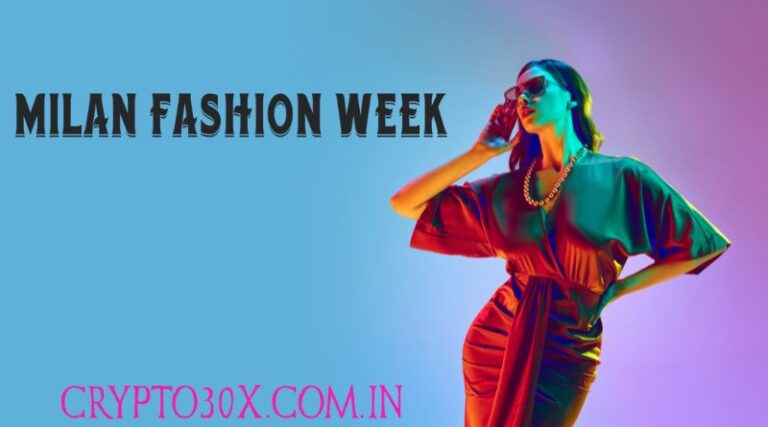With its rich history, Milan has become synonymous with luxury, boasting renowned brands such as Prada, Versace, and Dolce & Gabbana. This week-long celebration highlights not only the work of established designers but also provides a platform for emerging talent to shine on a global stage.
History and Evolution
Milan Fashion Week originated in 1958, emerging as a vital part of Italy’s post-war cultural renaissance. Initially focusing on Italian designers, it has grown to include international names, blending tradition with innovation. Over the years, the event has adapted to reflect changing tastes and social issues, incorporating sustainability, diversity, and technology into its showcases.
The early years of Milan Fashion Week revolved around showcasing Italian craftsmanship, with a strong emphasis on tailoring and luxury fabrics. By the 1980s, it had cemented its place as a global hub for avant-garde and chic fashion, thanks to icons like Giorgio Armani and Gianni Versace. Today, the event balances heritage with contemporary design, making it a must-attend for fashion enthusiasts and industry insiders alike.
Highlights of Milan Fashion Week
The Glamorous Runway Shows
The runway shows are the heart of Milan Fashion Week, where designers unveil their seasonal collections in dazzling displays of creativity. Held in iconic locations such as Palazzo Reale and Fondazione Prada, these shows often blur the line between fashion and performance art. Each designer brings a unique vision, from Gucci’s bold experimentation with patterns to Fendi’s seamless blend of tradition and modernity.
Runways are more than just presentations; they are storytelling events. Every detail, from lighting and music to model choreography, is meticulously planned to immerse the audience in the designer’s narrative. These showcases influence trends that trickle down to retail stores and streetwear, shaping global fashion culture.
A Platform for Emerging Designers
While Milan Fashion Week celebrates established brands, it also champions up-and-coming talent. The “Fashion Hub Market” initiative provides young designers with an opportunity to present their work to an international audience. This inclusion fosters innovation and ensures the industry continues to evolve. Designers like Marco Rambaldi and The Attico have gained prominence through such platforms, contributing fresh perspectives to Milan’s rich fashion tapestry.
Celebrity and Media Presence
Milan Fashion Week is synonymous with glamour, attracting A-list celebrities, influencers, and fashion editors. Stars like Rihanna, Zendaya, and Timothée Chalamet often grace the front rows, while social media buzz ensures the event reaches millions globally. The presence of high-profile attendees adds an air of exclusivity and underscores the cultural significance of the event.
The Role of Sustainability
In recent years, Milan Fashion Week has taken significant steps toward embracing sustainability. As the fashion industry faces criticism for its environmental impact, many Italian brands have incorporated eco-friendly practices into their collections. For instance, Stella McCartney’s commitment to cruelty-free fashion and Prada’s use of recycled nylon fabrics demonstrate how sustainability is becoming a central theme.
The event also includes discussions and panels addressing ethical concerns, such as waste reduction and labor practices. By prioritizing these issues, Milan Fashion Week is not only staying relevant but also leading the way for a more responsible fashion future.
Cultural and Economic Impact
Milan Fashion Week is more than a series of runway shows; it’s a cultural phenomenon that boosts the city’s economy and global influence. During the event, Milan transforms into a hub of creativity, with art exhibitions, pop-up stores, and exclusive parties. Local businesses, from luxury hotels to artisanal cafes, experience a surge in demand, underscoring the event’s economic significance.
Moreover, Milan Fashion Week enhances Italy’s reputation as a global leader in style and craftsmanship. The event attracts international buyers and investors, further solidifying the country’s position in the competitive fashion industry.
Technology and Innovation
As the fashion world embraces technology, Milan Fashion Week has integrated cutting-edge innovations to enhance the experience. Virtual reality, live streaming, and artificial intelligence are now staples of the event, making it accessible to a broader audience. During the pandemic, digital presentations became the norm, showcasing the industry’s adaptability.
Brands like Dolce & Gabbana have explored virtual runways, while others use augmented reality to offer interactive experiences. This fusion of fashion and technology ensures Milan Fashion Week remains at the forefront of modernity.
How to Experience Milan Fashion Week
Attending the Event
While Milan Fashion Week is primarily an industry event, fashion enthusiasts can still experience its magic. Public ticketed events, showroom appointments, and citywide celebrations allow a glimpse into the glamour. It’s essential to plan ahead, as accommodations and events fill up quickly.
Virtual Access
For those unable to attend in person, digital platforms provide an immersive alternative. Live streams of runway shows, behind-the-scenes content, and virtual tours offer global audiences a front-row seat to the action. Social media platforms like Instagram and TikTok also provide real-time updates, ensuring no one misses out on the excitement.
Conclusion
Milan Fashion Week is a celebration of artistry, innovation, and cultural heritage that transcends fashion. Its blend of tradition and modernity continues to captivate audiences, making it a cornerstone of the global fashion calendar. From dazzling runway shows to meaningful discussions on sustainability, Milan Fashion Week is a testament to the transformative power of style and creativity.
Whether you’re a seasoned fashion professional or an admirer of aesthetics, this event offers an unparalleled opportunity to explore the ever-evolving world of haute couture. As Milan Fashion Week looks to the future, it remains a beacon of inspiration, showcasing the best of what the fashion industry has to offer.
